Documentos
Sampa Lhundrub
བསམ་པ་ལྷུན་གྲུབ་བཞུགས་སོ།།
Sampa Lhündrub – Uma Súplica para a Realização Expontânea de todos os Desejos
Baixe aqui a Sadhana e, por favor, considere fazer uma doação para dar suporte ao nosso processo de pesquisa da cultura tibetana.
Mudra
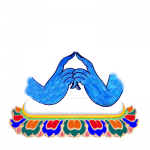 Mudra (sânscrito: “selo”, “marca”, ou “gesto”; tibetano: ཕྱག་རྒྱ་, THL: chakgya ) é um gesto simbólico ou ritual. Enquanto alguns mudras envolvem todo o corpo, a maioria é realizada com as mãos e os dedos. Estes gestos, quando usados com a visão correta, durante a prática de meditação, são tidos como um selo, o que garante a eficácia da aspiração meditativa.
Mudra (sânscrito: “selo”, “marca”, ou “gesto”; tibetano: ཕྱག་རྒྱ་, THL: chakgya ) é um gesto simbólico ou ritual. Enquanto alguns mudras envolvem todo o corpo, a maioria é realizada com as mãos e os dedos. Estes gestos, quando usados com a visão correta, durante a prática de meditação, são tidos como um selo, o que garante a eficácia da aspiração meditativa.
Existem 108 mudras que são usados em rituais tântricos.
No yoga, os mudras são usados em conjunto com pranayama (exercícios de respiração yóguicos), geralmente sentados em pose de Padmasana, Sukhasana ou Vajrasana, para estimular diferentes partes do corpo envolvidas com a respiração e afetar o fluxo de prana no corpo.
Kurukulle
 The Passionate Lotus Dakini Kurukulla
The Passionate Lotus Dakini Kurukulla
Escute o mantra no youtube: OM KURUKULE HRI SOHA
One Buddhist Dakini originating from the country of Uddiyana is the goddess Kurukulla.
The name Kurukulla is translated into Tibetan as Rigjyedma (rig-byed-ma), “she who is the cause knowledge.”
She is associated with a king of Uddiyana named Indrabhuti.
But there were at least three Indrabhutis and this is most likely the second one. Moreover, there exists a sadhana text attributed to him for the red Kurukulla in her eight-armed form.
But whether she had eight arms or four arms, she is generally known as the Uddiyana Kurukulla.
Most modern scholars believe this indicates that Kurukulla was originally a tribal goddess, much like the Hindu goddess Durga had been in India, who later, because of her popularity, became associated with the Buddhist great goddess Tara.
For this reason, Kurukulla is often called the Red Tara (sgrol-ma dmar-po) or Tarodbhava Kurukulla, “the Kurukulla who arises from Tara.”
The Magical Function of Enchantment
Kurukulla appears to have become popular originally, and she remains so even among the Tibetans today, because of her association with the magical function of enchantment (dbang gi ‘phrin-las) or the bewitching of people in order to bring them under one’s power (dbang du bsdud).
More than any other figure in the Buddhist pantheon, Kurukulla becomes the Buddhist goddess of love and sex, corresponding to the Western gooddesses Aphrodite and Venus.
She is depicted as a voluptuous and seductive nude sixteen year old girl.
Among the attributes she holds in her four hands, four arms being her most common manifestation, are the flower-entwined bow and arrow, reminiscent of the Western Eros and Cupid, although as the goddess of witchcraft, she is more akin to Diana.
It may appear strange and ironic to us that Buddhism, originally the religion of celibate monks, should give birth to this attractive and seductive sex goddess. Buddhism as a spiritual path is ultimately concerned with enlightenment and liberation from Samsara.
This ultimate goal is known as the supreme attainment or siddhi (mchog gi dngos-grub).
But not all Buddhist practitioners are celibate monks living in semi-permanent meditation retreat isolated from the world.
Like everyone else, Buddhists must deal with the practical circumstances of life and society.
Sadhana or deity invocation is a meditation and ritual practice where the practitioner in meditation assumes the aspect or form of the deity, who is regarded as a manifestation of the enlightened awareness of the Buddha, and then invokes the spiritual powers and wisdom and capacities of that particular deity as an aid to realizing liberation and enlightenment.
This Deity Yoga, or assuming in one’s meditation the archetypal form of the deity, is considered a particularly powerful method to accelerate one’s spiritual evolution.
The meditation image of the deity visualized by the practitioner in sadhana, being an archetype or manifestation of enlightened awareness, and this radiant image opens a channel and acts as a receptacle for receiving the grace or blessings of the Buddha for a specific purpose.
The process of visualization in meditation is a method of accessing and focusing spiritual energy, like using the lens of a magnifying glass to focus the rays of the sun in order to kindle a fire.
The image of the deity is something that is concrete and accessible to human consciousness.
In his own nature as the Dharmakaya, the Buddha is beyond conception by the finite human mind.
The meditation deity, however, makes the unmanifest manifest and therefore accessible to consciousness.
In the same way, Christians might have visions of angels that might make the grace of God manifest, but in Buddhism there are both male and female meditation deities, and Kurukulla is certainly an example of the latter.
But also associated with many sadhanas are karma-yogas or action practices aimed at achieving more worldly goals. At the popular level, this greatly added to the appeal of Buddhism.
The psychic powers developed through sadhana practice are known as ordinary attainments or siddhis (thun-mong gi dngos-grub), although to us Westerners, with our historical conditioning, psychic powers hardly seem very ordinary.
But in Catholic countries, one is quite familiar with such practices as lighting candles while praying to the Holy Virgin or the Saints for help with worldly matters and not just the salvation of one’s soul after death.
Generally, these karma-yogas or action practices are classified into the four magical actions (‘phrin-las bzhi).
To our Western consciousness, such actions appear miraculous, even supernatural, but in the Buddhist view, psychic manifestations are part of the natural order. There is nothing supernatural about them.
It is just that our modern view as to what constitutes the nature of reality is too limited.

Sadhana texts speak of the four magical actions or magics:
- 1. White magic or Shantika-karma (zhi-ba’i ‘phrin-las) has the function of calming and pacifying conditions and healing. White Tara is an example of a deity that specifically has this white function.
- 2. Yellow Magic or Paushtika-karma (rgyas-pa’i phrin-las) has the function of increasing wealth, prosperity, abundance, merit, knowledge, and so on. Vasundahara and Jambhala are examples of deities with these functions. Hence they are yellow in color.
- 3. Red Magic or Vashya-karma (dbang gi phrin-las) has the function of bringing people under one’s power, of enchanting, bewitching, attracting, subjugating, magnetizing them. This is the primary function of Kurukulla and hence her red color.
- 4. Black Magic or Raudra-karma (drag-po’i phrin-las) has the function of destroying evil and obstructions to the spiritual path. This is the specific function of many wrathful manifestations such as the Dakini Simhamukha who is dark blue in color.
These four functions are allotted to the four gates of the mandala palace, namely,
the white or pacifying function in the east,
the yellow or increasing function in the south,
the red or enchanting function in the west, and
the black or destroying function in the north.
With each of these four magical functions there exists an elaborate system of correspondences.
But generally, in the West, there is a prejudice against magic, especially in Protestant Christian cultures, which makes it difficult for people to understand the ancient Indian and the Tibetan approach to these matters.
This is compounded as well by our four hundred years of the scientific world-view, which admits mechanistic causality as the only possible natural cause of events.
Magic principally relates to our dimension of energy, and this energy, according to the traditional way of thinking, is intermediate between the mental and the physical, just as the soul is intermediate between the spirit and the flesh.
Ritual is simply one way to access and direct energy. Although mind or spirit is primary, the other dimensions of energy or soul and body are important.
Western tradition speaks only of two kinds of magic: white and black.
The former comes from God and his angels and the latter from the Devil and his minions.
But the Buddhist distinction between white and black is according to function and not intention;
the intention of the Buddhist practitioner in practicing magic is always compassionate and aims at preventing evil acts, to help others and alleviate suffering, whereas the Western understanding of black magic involves the deliberated attempt to harm and injure.
Therefore, in Buddhist terms, the motivation in these four magical actions is always white.
Without the presence of the Bodhichitta, the thought of compassion, no action or ritual is considered to be genuinely Buddhist.

But where we find sadhana or theurgy, that is, high magic, we also find low magic or goetia, that is, common witchcraft. In the Tibetanview, these practices are not necessarily black, no more sinister than finding lucky numbers for betting on the horses, or making love potions or amulets for protection, and so on.
For these common practices of folk magic, it is not even necessary to enter into meditation and transform oneself into the deity.
Nevertheless, Kurukulla is also the patron of such activities.
She is pre-eminently the Buddhist Goddess of Witchcraft and Enchantment. In a real sense, she represents the empowerment of the feminine in a patriarchal milieu.
Again, one might invoke Kurukulla to win over the heart of one’s boss for a raise, or a client for a new sales contract, or convince the personnel representative to hire one for a job.
In general, Tibetans take a very clear-eyed and practical view of life, without sentimentalizing spirituality as we tend to do in the West.
They do not rigidly separate this world, with its practical concerns, from the world of the spirit.
Just as Tara in her usual green form may be called upon by Buddhists to protect them from various dangers and threats, in particular the eight great terrors and the sixteen fears, so in her red form as Kurukulla, she may be called upon to exercise her powers of enchantment and bewitchment to bring under her power (dbang du bsdud) those evil spirits, demons, and humans who work against the welfare of humanity and its spiritual evolution.
However, in terms of practical magic, she can bring under the practitioner’s power a personal enemy, a boss, a politician, a policeman, or a recalcitrant lover, male or female.
In Tibet, Kurukulla was also called upon when commencing the building of a new monastery, when undertaking a new business or enterprise, when going into court in order to win a law case, and other such activities, because she can subdue and subjugate the demonic and the human forces that stand in one’s way.
She, together with Manjushri and Sarasvati, might even be called upon when a student faces a difficult examination in school.
A text like the Arya Tara Kurukulla Kalpa contains many ritual practices of lower magic to accomplish specific goals, for example:
- 1. amulets for enchanting and bringing others under one’s power,
- 2. spells to frighten away poisonous snakes,
- 3. methods for a dissatisfied wife to subjugate her husband,
- 4. amulets for protection from evil spirits and bad luck,
- 5. spells for acquiring wealth and gaining power,
- 6. the use of cowrie shells in divination and ritual,
- 7. divinations to find a treasure,
- 8. methods for walking on water,
- 9. methods to avoid getting gray hair,
- 10. cures for frigidity and impotence.

In one Kurukulla Sadhana found in the Sadhanamala(No. 72), there occurs a list of eight great siddhis or magical powers acquired through her practice:
- 1. Khadga-siddhi (ral-gri), the power to be invincible in battle with a sword (khadga);
- 2. Anjana-siddhi (mig-rtsi), the power to remove ordinary lack of sight by using a magical ointment that enables the user to see Devas, Nagas, and other spirits;
- 3. Padalepa-siddhi (rkang-pa’i byug-pa), the power to be swift of foot by using a magical ointment that, when applied to the feet, allows the user to run with incredible swiftness;
- 4. Antardhana-siddhi (mi snang-bar ‘gyur-ba), the power to become invisible;
- 5. Rasayana-siddhi (bcud-len), the power of rejuvenation and long life through obtaining the elixir of life by way of an alchemical process;
- 6. Khechara-siddhi (mkha’-spyod), the power to levitate or to fly through the sky;
- 7. Bhuchara-siddhi (zhing-spyod), the power to move freely through the earth, mountains, and solid walls; and
- 8. Patala-siddhi (sa-‘og), the power to have command over the spirits of the underworld (patala).
The above were not the usual concerns of monks.
And these recipies are very reminiscent to folk magic practices, for example, in Afro-American traditions like Voodoo, Houdou, and Santeria.
Just as a practitioner of Santeria would first invoke Allegua or Eshu before engaging in a magical rite,
here the Tibetan practitioner would invoke Kurukulla. However, the Buddhist Goddess of Witchcraft, is not our familiar stereotype of the witch as an old crone in a pointed hat and a wart on her hooked nose, but she is a beautiful naked sixteen year old girl.
The Symbolic Interpretation of Her Iconography
According to the texts, Kurukulla is sixteen years old because sixteen is the ideal number that signifies perfection, four times four.
Her face is beautiful and her body voluptuous and alluring, as well as being red in color, because of her magical function of enchantment and magnetism.
She has a single face because she embodies non-dual wisdom beyond conventional distinctions of good and evil.
She is naked because she is unconditioned by discursive thoughts. She has four arms because of the four immeasurable states of mind, namely, love, compassion, joy, and equanimity.
She holds the bow and arrow entwined with flowers because she can give rise to thoughts of desire in the minds of others.
In her other two hands she holds the hook that attracts and summons them into her presence and the noose by which she binds them to her will.
The ornaments of human bone she wears signify the five perfections, whereas she herself embodies the sixth perfection, that of wisdom. She wears a necklace of fifty freshly severed human heads dripping blood because she vanquishes the fifty negative emotions.
She is dancing because she is active and energetic, her compassionate activity manifesting in both Samsara and Nirvana.
She dances, treading upon a male human corpse because she enchants and subjugates the demon of ego.
She stands upon a red sun disc because her nature is hot and enflamed with passion and upon a red lotus blossom because she is a pure vision of enlightened awareness.
In the practitioner’s meditation, such is the recollection of the purity (dag dran) of the vision of the goddess.
Kurukulla in the Nyingmapa Tradition
The practice of Kurukulla is found in all four Buddhist schools, especially in rituals associated with the enchanting or subjugating magical function.
Indeed, in the Tangyur there are found a number of sadhana texts for Kurukulla besides that composed by king Indrabhuti. In them her name is usually not translated into Tibetan, but given in the variant form Ku-ru-ku-lle.
However, the chief canonical source for the goddess, found in the Tantra section (rgyud) of the Kangyur, is the Arya Tara Kurukulla Kalpa (‘Phags-ma sgrol-ma ku-ru-ku-lle’i rtog-pa),
“The Magical Rituals for the Noble Tara Kurukulla.”
This text was translated into Tibetan by Tsultrim Gyewa, a Tibetan disciple of the great Indian master Atisha (982-1054).
The latter was largely responsible for introducing the cult of the goddess Tara into Tibet in the 11th century.
In the Nyingmapa Terma tradition, she occurs in her two or four-armed form.
In the Terma cycle of Chogyur Lingpa (1829-1870), she appears in her conventional four-armed form.
In the Terma of Apong Tulku, one of the sons of the famous 19th century Terton Dudjom Lingpa, she occurs in a two-armed form, sitting at ease, appearing much like the more usual form of Green Tara.
She holds in her right hand a vase filled with amrita nectar and in her left hand before her heart the stem of a lotus and on the blossom itself by her ear is a miniature bow and arrow. In this guise she is specifically called Red Tara (sgrol-ma dmar-mo).
In the Terma cycle of Dudjom Lingpa (1835-1904), Kurukulla represents the inner aspect of Dechen Gyalmo, the yogini form of Yeshe Tsgyal, the consort of Guru Padmasambhava.
Moreover, it is interesting that in many Nyingmapa Terma texts, including Chogyur Lingpa and Dudjom Lingpa, the Hindu godMahadeva (or Shiva) and his consort Uma are closely associated with Kurukulla as guardian deities (srung-ma)
with the magical function of enchantment. Mahadeva and Uma are offered a red torma cake and charged to fulfill the task of bringing others under one’s power.
Kurukulla in the Sakyapa Tradition
But Kurukulla is also very popular among the Newer Tantric schools. In particular, she is counted as one among “the Three Red Ones” (dmar-po skor gsum) of the Sakyapa school and she is included among the Thirteen Golden Dharmas, which the Sakyapas had received from India and Nepal.
These teachings are called Golden Dharmas (gser chos), not only because they represent very precious teachings, but because in those days (11th century) Tibetan students had to pay a lot of gold for the teachings obtained from Indian masters. Tibet was famous for its rich gold deposits.
Moreover, in the large Sakyapa collection of sadhanas known as the sGrub-thabs kun-btus are found five sadhanas for Kurukulla in the Sakyapa tradition.
But for the Sakyapas, the source par excellence for the practice of Kurukulla is in the Shri Hevajra Mahatantraraja, according to the tradition of Lalitavajra, and coming to them from the Mahasiddha Virupa and the Tibetan translator Drogmi (‘Brog-mi ye-shes, 993-1050).
She is known as Hevajra-krama Kurukulla and appears in the usual four-armed form.
As it says in this Tantra (Part I, chapter 11, vv. 12-15):
“Now I shall explain the sadhana for Kurukulla by means of which all beings may be brought into subjugation. Previously, this had been explained extensively in the twelve parts (of the larger version of the Tantra), but here it is condensed in brief.
The Goddess originates from the syllable HRIH. She is red in color and has four arms. Her hands hold the bow and arrow, as well as the utpala flower (whose stem is a noose) and the iron hook.
By merely meditating upon her, one brings the three worlds under one’s power.
With one hundred thousand recitations of her mantra, one brings kings (under one’s power), with ten thousand recitations the masses of ordinary people of the world, with ten million recitations cattle and the Yakshas (earth spirits),
with seven hundred thousand recitations the Asuras, with two hundred thousand recitations the Devas, and with one hundred recitations other Mantra practitioners.”
She is mentioned in two other places in the second chapter of Part I (v. 19 and v. 26) and here her mantra is given, together with the action mantras that may be appended to it for specific magical purposes.
Taranatha (b. 1575), in his collection, the Rin-byung brgya-rtsa, gives a sample Kurukulla sadhana from the Sakyapa tradition: “From out of the state of emptiness arise the eight cremation grounds.
In their midst, from the syllable PAM appears a red lotus blossom.
At its center, from the syllable RAM, appears a solar disc, on which arises the red syllable HRIM, with a long vowel mark and visarga. From this syllable emanate rays of light like hooks and nooses,
which make offerings to all the Exalted Ones, thereby establishing all sentient beings in the state of Our Holy Lady.
Thereafter they return and are dissolved into the syllable HRIM, whereupon I transform into Shri Kurukulla.
She is red in color, with a single face and four arms. One pair draw a bow entwined with flowers and an utpala-tipped arrow at her ear.
Her other right hand holds an iron hook that summons and her other left hand holds the stem of an utpala flower that forms a noose. She displays her fangs; she has three eyes and round breasts, being like a maiden sixteen years of age.
Her tawny hair streams upward. She is adorned with five dried skulls (as her tiara), she has a long necklace of fifty freshly severed heads.
She is adorned with ornaments of human bone and has a tiger skin across her thighs. She stands in ardhaparyanka dance position, with her left leg extended, upon a human corpse whose face shows to her left, amidst red rays of light and blazing masses of fire.
At her crown is the syllable OM, at her throat is the syllable AH, and at her heart is the syllable HUM.
In the center of her heart, upon a red utpala blossom and a solar disc, is the red syllable HRIM.”
Other Forms of Kurukulla
As we have said, this form of red Kurukulla with four arms is also known as Uddiyana Kurukulla or Uddiyanodbhava, the Kurukulla who comes from Uddiyana.
And again, she is known as Tarodbhava Kurukulla, she who arises from Tara. But there exist also two-armed and eight-armed forms of Kurukulla.
The Ashtabhuja Kurukulla with eight arms appears in a sadhana attributed to king Indrabhuti in the Tangyur and in a sadhana in the Sadhanamala collection (No. 174).
Her first two hands make the gesture of Trailokyavijaya-mudra or “victory over the three worlds”, while her other right hands hold the iron hook, an arrow, and make the gesture of supreme generosity, varada-mudra. Her other left hands hold the noose, the bow, and the red lotus.
Her two legs are in vajrasana position.
Moreover, she is surrounded by a retinue of eight goddesses resembling herself, but with four arms: in the east Prassana Tara, in the south Nishpanna Tara,
in the west Jaya Tara, in the north Karna Tara, in the southeast Aparajita, in the southwest Pradipa Tara, in the northwest Gauri Tara, and in the northeast Chunda.
There is also a two-armed white form of Kurukulla known as Shukla Kurukulla in the Sadhanamala (No.185). She has a single face that is calm and beautiful and the Buddha Amitabha adorns her crown.
Her two hands hold a mala or rosary and a bowl full of lotus flowers. Her two legs are in vajrasana position.
She adorns her body with serpents who are the great Naga kings: Ananta is her hair ribbon, Vasuki is her necklace, Takshaka is her ear rings, Karkotaka is her sacred thread, Padma is her girdle, Mahapadma is her anklet, and so on.
Kurukulla will also appear at times in the retinues of other deities. Two examples are given by Nebesky-Wojkowitz:
In the mandala of the wealth god, the red Jambhala, she appears in her usual four-armed form and in the mandala of the four-armed Mahakala (Ye-shes mgon-po phyag-bzhi-pa) according to the system of Shantigupta, she appears in the southwest in a red two-armed form.
She was also taken into Hinduism for her name is found among the one thousand epithets of Mahadevi in the Lalita-sahasra-namah. She is represented as a dancing beautiful maiden or kumari.
Source
By JOHN MYRDHIN REYNOLDS
vajranatha.com
Chari
A borda logo abaixo do topo, mesas e outras peças dos móveis tibetanos, é a onda “T-wave” ou o trovão. Este é o trovão vajra (cetro de diamante, dorje – em tibetano), simbolizando meios hábeis, compaixão, samsara. Essa compaixão é uma qualidade ativa, em vez de simples sentimentos de simpatia não transformados em ação. Compaixão refere-se a uma ação que é exatamente consoante com o que está ocorrendo e que não é auto-referencial.
Hung
A sílaba HUNG: Representa a Mente Iluminada. A sílaba HUNG nos ajuda a desenvolver mente búdica e nos abençoa com conhecimento. Portanto, isso nos aproxima de alcançar a Budeidade. A sílaba HUNG nos proporciona bênçãos para alcançar a felicidade e aumenta nossa capacidade de ajudar os outros.
Washi Tape
 Washi Tape – também chamada de fita adesiva japonesa – é uma fita adesiva de alta qualidade, feita de papel de arroz.
Washi Tape – também chamada de fita adesiva japonesa – é uma fita adesiva de alta qualidade, feita de papel de arroz.
Fácil de ser usada e descola sem deixar resíduo de cola. A leve transparência das fitas também permite fazer sobreposições.
Orgyen Menla
Orgyen Menla (Tib. ཨོ་རྒྱན་ སྨན་བླ་, Wyl. o rgyan sman bla) – O Guru da Medicina de Uddyana, é o Guru Padmasambhava (Guru Rinpoche) que aparece sob o aspecto do Buda da Medicina, ou Bhaishajyaguru; Deste modo, a prática de Orgyen Menla, combina as bênçãos do Guru Rinpoche e as do Buda da Medicina para realizar a cura do corpo, da mente e das emoções.
Na linhagem de Dudjom Tersar, a prática de Orgyen Menla é chamada Orgyen Menla Dütsi Bum Zang.
A prática de Orgyen Menla é particularmente eficaz para pacificar epidemias, bem como outras doenças, as forças destrutivas do desequilíbrio dos quatro elementos, o sofrimento e as influências negativas. É também benéfica para aumentar a longevidade e a sabedoria.
É nos ensinado pela Medicina Budista que todos os obstáculos e todas as doenças internas, externas e sutís são resultado do nosso próprio estado de confusão existencial. A prática, meditação e recitação do mantra de Orgyen Menla não se limita à cura de doenças e sofrimento num nível relativo, mas também e sobretudo guia-nos à realização da sabedoria suprema; a perfeita iluminação completamente além dos sofrimentos da existência condicionada.
“Através da prática do Buda da Medicina nós não só conseguimos benefício para nós mesmos, mas na verdade estamos a cultivar o potencial de beneficiar os outros. E ao fazermos estas práticas abençoamos realmente o meio ambiente e todos os seres que o habitam. ” – Thrangu Rinpoche
“Na época degenerada quando o tempo de vida é curto, as doenças são muitas e as epidemias ferozes atacam de repente, se alguém sofre com o medo de perder a vida, deve-se realizar na prática de Orgyen Menla.” – Kyabje Dudjom Rinpoche
Maitreya
 Maitreya (Tibetan: cham pa, Jetsun Champa Gonpo (rje btsun byams pa mgon po), inglês: Amor), o bodhisattva de bondade amorosa e o Buda futuro, do próximo éon, após a era do Buda Shakyamuni. Acredita-se que Maitreya reside atualmente no Céu de Tushita.
Maitreya (Tibetan: cham pa, Jetsun Champa Gonpo (rje btsun byams pa mgon po), inglês: Amor), o bodhisattva de bondade amorosa e o Buda futuro, do próximo éon, após a era do Buda Shakyamuni. Acredita-se que Maitreya reside atualmente no Céu de Tushita.
Rinpoche
Rinpoche – རིན་པོ་ཆེ་, rin-po-che – iluminado, “precioso”, um título honorífico para um lama tibetano respeitado, como um tulku.

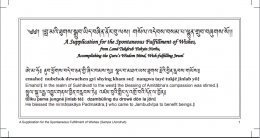
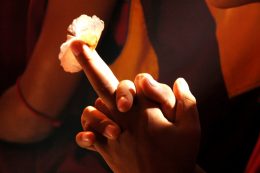

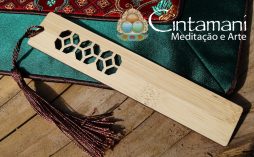
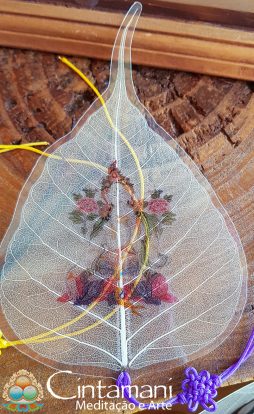
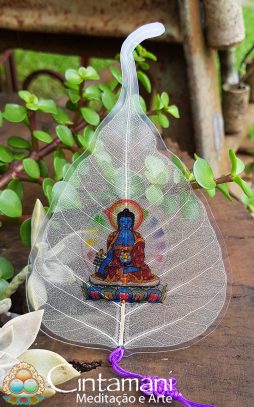
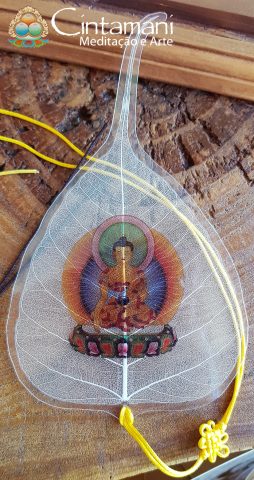
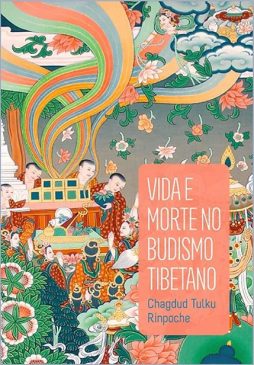
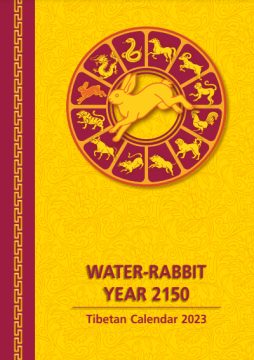
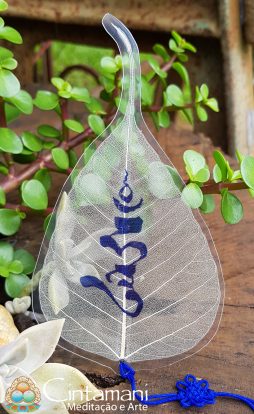
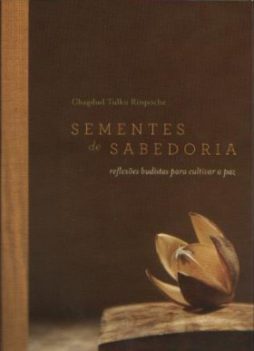
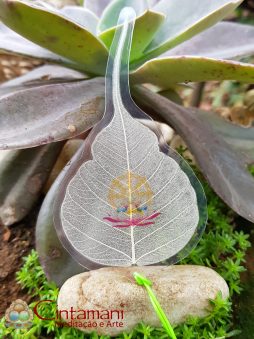
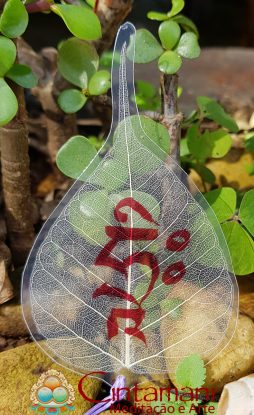

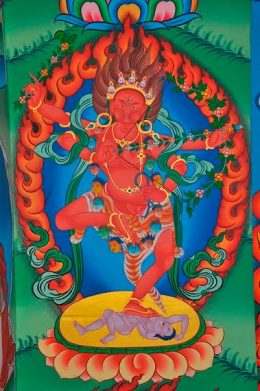
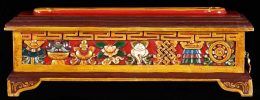
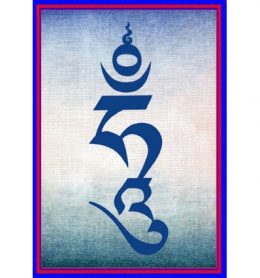
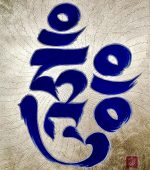
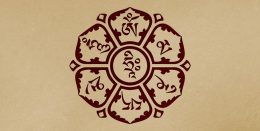
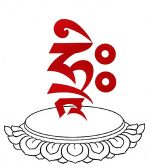 Sílaba HRI
Sílaba HRI
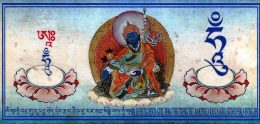
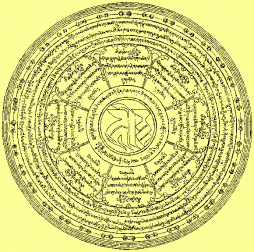
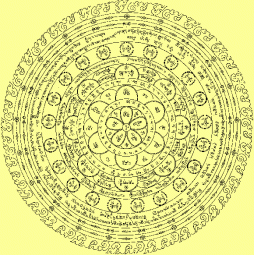
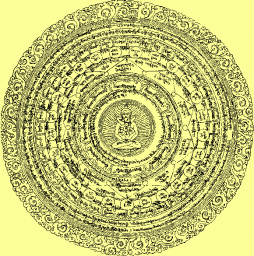
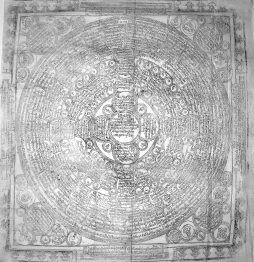

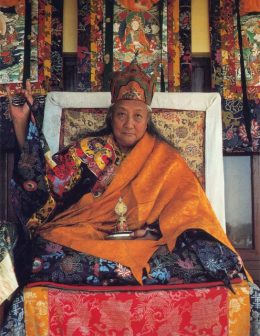
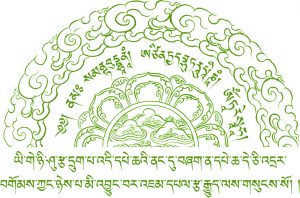
 Cintamani - Meditação e Arte - Copyright 2020 - Todos os direitos reservados.
Cintamani - Meditação e Arte - Copyright 2020 - Todos os direitos reservados.